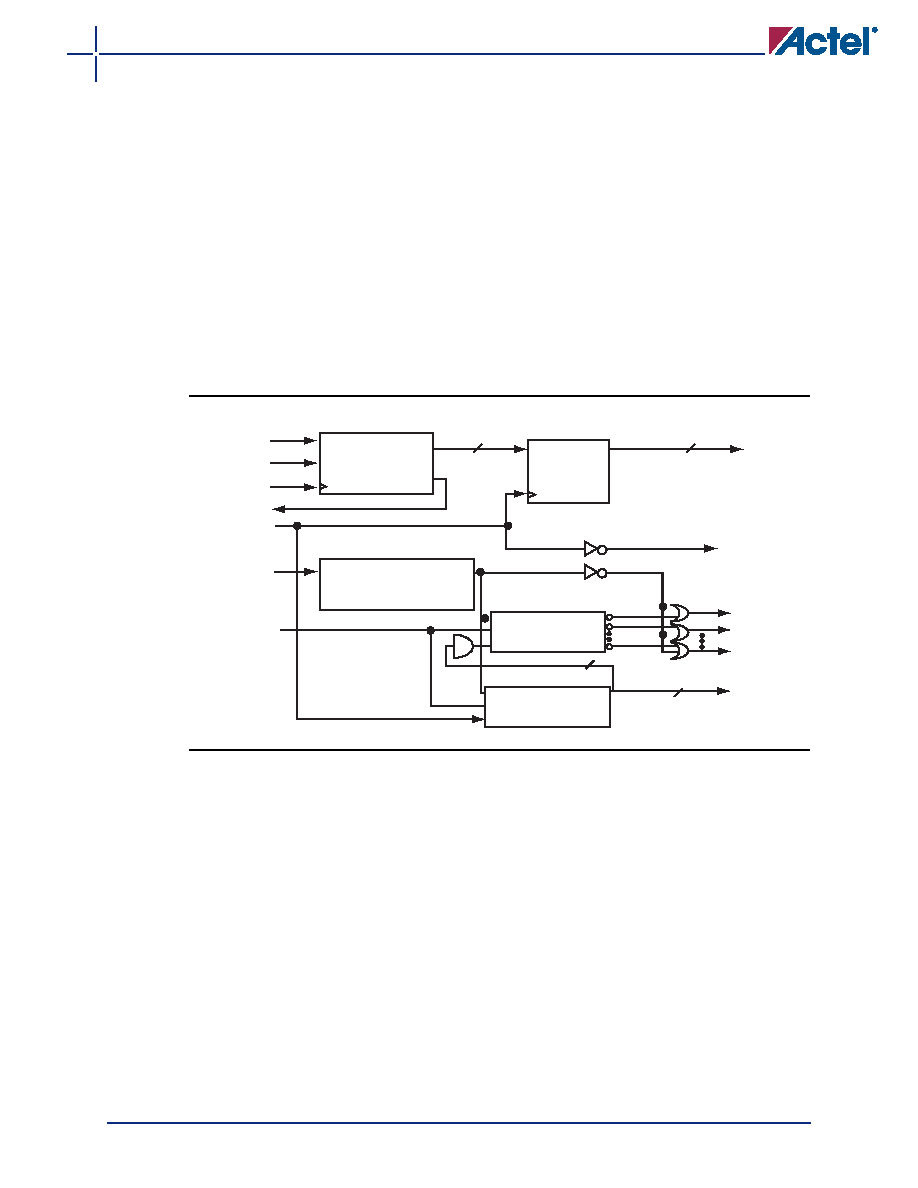- 您現在的位置:買賣IC網 > PDF目錄209984 > A3P1000-1FGG484FG484 FPGA, 1000000 GATES, PBGA484 PDF資料下載
參數資料
| 型號: | A3P1000-1FGG484FG484 |
| 元件分類: | FPGA |
| 英文描述: | FPGA, 1000000 GATES, PBGA484 |
| 封裝: | 1 MM PITCH, GREEN, FBGA-484 |
| 文件頁數: | 259/608頁 |
| 文件大小: | 20486K |
| 代理商: | A3P1000-1FGG484FG484 |
第1頁第2頁第3頁第4頁第5頁第6頁第7頁第8頁第9頁第10頁第11頁第12頁第13頁第14頁第15頁第16頁第17頁第18頁第19頁第20頁第21頁第22頁第23頁第24頁第25頁第26頁第27頁第28頁第29頁第30頁第31頁第32頁第33頁第34頁第35頁第36頁第37頁第38頁第39頁第40頁第41頁第42頁第43頁第44頁第45頁第46頁第47頁第48頁第49頁第50頁第51頁第52頁第53頁第54頁第55頁第56頁第57頁第58頁第59頁第60頁第61頁第62頁第63頁第64頁第65頁第66頁第67頁第68頁第69頁第70頁第71頁第72頁第73頁第74頁第75頁第76頁第77頁第78頁第79頁第80頁第81頁第82頁第83頁第84頁第85頁第86頁第87頁第88頁第89頁第90頁第91頁第92頁第93頁第94頁第95頁第96頁第97頁第98頁第99頁第100頁第101頁第102頁第103頁第104頁第105頁第106頁第107頁第108頁第109頁第110頁第111頁第112頁第113頁第114頁第115頁第116頁第117頁第118頁第119頁第120頁第121頁第122頁第123頁第124頁第125頁第126頁第127頁第128頁第129頁第130頁第131頁第132頁第133頁第134頁第135頁第136頁第137頁第138頁第139頁第140頁第141頁第142頁第143頁第144頁第145頁第146頁第147頁第148頁第149頁第150頁第151頁第152頁第153頁第154頁第155頁第156頁第157頁第158頁第159頁第160頁第161頁第162頁第163頁第164頁第165頁第166頁第167頁第168頁第169頁第170頁第171頁第172頁第173頁第174頁第175頁第176頁第177頁第178頁第179頁第180頁第181頁第182頁第183頁第184頁第185頁第186頁第187頁第188頁第189頁第190頁第191頁第192頁第193頁第194頁第195頁第196頁第197頁第198頁第199頁第200頁第201頁第202頁第203頁第204頁第205頁第206頁第207頁第208頁第209頁第210頁第211頁第212頁第213頁第214頁第215頁第216頁第217頁第218頁第219頁第220頁第221頁第222頁第223頁第224頁第225頁第226頁第227頁第228頁第229頁第230頁第231頁第232頁第233頁第234頁第235頁第236頁第237頁第238頁第239頁第240頁第241頁第242頁第243頁第244頁第245頁第246頁第247頁第248頁第249頁第250頁第251頁第252頁第253頁第254頁第255頁第256頁第257頁第258頁當前第259頁第260頁第261頁第262頁第263頁第264頁第265頁第266頁第267頁第268頁第269頁第270頁第271頁第272頁第273頁第274頁第275頁第276頁第277頁第278頁第279頁第280頁第281頁第282頁第283頁第284頁第285頁第286頁第287頁第288頁第289頁第290頁第291頁第292頁第293頁第294頁第295頁第296頁第297頁第298頁第299頁第300頁第301頁第302頁第303頁第304頁第305頁第306頁第307頁第308頁第309頁第310頁第311頁第312頁第313頁第314頁第315頁第316頁第317頁第318頁第319頁第320頁第321頁第322頁第323頁第324頁第325頁第326頁第327頁第328頁第329頁第330頁第331頁第332頁第333頁第334頁第335頁第336頁第337頁第338頁第339頁第340頁第341頁第342頁第343頁第344頁第345頁第346頁第347頁第348頁第349頁第350頁第351頁第352頁第353頁第354頁第355頁第356頁第357頁第358頁第359頁第360頁第361頁第362頁第363頁第364頁第365頁第366頁第367頁第368頁第369頁第370頁第371頁第372頁第373頁第374頁第375頁第376頁第377頁第378頁第379頁第380頁第381頁第382頁第383頁第384頁第385頁第386頁第387頁第388頁第389頁第390頁第391頁第392頁第393頁第394頁第395頁第396頁第397頁第398頁第399頁第400頁第401頁第402頁第403頁第404頁第405頁第406頁第407頁第408頁第409頁第410頁第411頁第412頁第413頁第414頁第415頁第416頁第417頁第418頁第419頁第420頁第421頁第422頁第423頁第424頁第425頁第426頁第427頁第428頁第429頁第430頁第431頁第432頁第433頁第434頁第435頁第436頁第437頁第438頁第439頁第440頁第441頁第442頁第443頁第444頁第445頁第446頁第447頁第448頁第449頁第450頁第451頁第452頁第453頁第454頁第455頁第456頁第457頁第458頁第459頁第460頁第461頁第462頁第463頁第464頁第465頁第466頁第467頁第468頁第469頁第470頁第471頁第472頁第473頁第474頁第475頁第476頁第477頁第478頁第479頁第480頁第481頁第482頁第483頁第484頁第485頁第486頁第487頁第488頁第489頁第490頁第491頁第492頁第493頁第494頁第495頁第496頁第497頁第498頁第499頁第500頁第501頁第502頁第503頁第504頁第505頁第506頁第507頁第508頁第509頁第510頁第511頁第512頁第513頁第514頁第515頁第516頁第517頁第518頁第519頁第520頁第521頁第522頁第523頁第524頁第525頁第526頁第527頁第528頁第529頁第530頁第531頁第532頁第533頁第534頁第535頁第536頁第537頁第538頁第539頁第540頁第541頁第542頁第543頁第544頁第545頁第546頁第547頁第548頁第549頁第550頁第551頁第552頁第553頁第554頁第555頁第556頁第557頁第558頁第559頁第560頁第561頁第562頁第563頁第564頁第565頁第566頁第567頁第568頁第569頁第570頁第571頁第572頁第573頁第574頁第575頁第576頁第577頁第578頁第579頁第580頁第581頁第582頁第583頁第584頁第585頁第586頁第587頁第588頁第589頁第590頁第591頁第592頁第593頁第594頁第595頁第596頁第597頁第598頁第599頁第600頁第601頁第602頁第603頁第604頁第605頁第606頁第607頁第608頁

SRAM and FIFO Memories in Actel’s Low-Power Flash Devices
v1.1
6 - 19
counter. Using a counter to generate the address bits and sweep through the address range of the
RAM blocks is recommended, since it reduces the complexity of the user interface block and the
board-level JTAG driver.
Moreover, using an internal counter for address generation speeds up the initialization procedure,
since the user only needs to import the data through the JTAG port.
The designer may use different methods to select among the multiple RAM blocks. Using counters
along with demultiplexers is one approach to set the write enable signals. Basically, the number of
RAM blocks needing initialization determines the most efficient approach. For example, if all the
blocks are initialized with the same data, one enable signal is enough to activate the write
procedure for all of them at the same time. Another alternative is to use different opcodes to
initialize each memory block. For a small number of RAM blocks, using counters is an optimal
choice. For example, a ring counter can be used to select from multiple RAM blocks. The clock
driver of this counter needs to be controlled by the address generation process.
Once the addressing of one block is finished, a clock pulse is sent to the (ring) counter to select the
next memory block.
Figure 6-9 illustrates a simple block diagram of an interface block between UJTAG and RAM blocks.
In the circuit shown in Figure 6-9, the shift register is enabled by the UDRSH output of the UJTAG
macro. The counters and chip select outputs are controlled by the value of the TAP Instruction
Register. The comparison block compares the UIREG value with the "start initialization" opcode
value (defined by the user). If the result is true, the counters start to generate addresses and
activate the WEN inputs of appropriate RAM blocks.
The UDRUPD output of the UJTAG macro, also shown in Figure 6-9, is used for generating the write
clock (WCLK) and synchronizing the data register and address counter with WCLK. UDRUPD is HIGH
when the TAP Controller is in the Data Register Update state, which is an indication of completing
the loading of one data word. Once the TAP Controller goes into the Data Register Update state,
the UDRUPD output of the UJTAG macro goes HIGH. Therefore, the pipeline register and the
address counter place the proper data and address on the outputs of the interface block.
Meanwhile, WCLK is defined as the inverted UDRUPD. This will provide enough time (equal to the
UDRUPD HIGH time) for the data and address to be placed at the proper ports of the RAM block
before the rising edge of WCLK. The inverter is not required if the RAM blocks are clocked at the
falling edge of the write clock. An example of this is described in the "Example of RAM
Figure 6-9 Block Diagram of a Sample User Interface
n
m
UTDI
UDRSH
UDRCK
UTDO
UDRUPDI
UIREG
URSTB
CLK
Enable
SIN
Serial-to-Port Shift Register
POUT
SOUT
D
En
Reset
CLK
En
Reset
CLK
Q
CLK
WDATA
WCLK
WEN1
WEN2
WENi
WADDR
Chip Select
Data Reg.
Addr Counter
Ring
Counter
Binary
Counter
Compare
with
Defined Opcode
In
Result
相關PDF資料 |
PDF描述 |
|---|---|
| A3P1000-1FGG484IFG484 | FPGA, 1000000 GATES, PBGA484 |
| A3P1000-1PQ208IPQ208 | FPGA, 1000000 GATES, PQFP208 |
| A3P1000-1PQ208PQ208 | FPGA, 1000000 GATES, PQFP208 |
| A3P1000-1PQG208IPQ208 | FPGA, 1000000 GATES, PQFP208 |
| A3P1000-1PQG208PQ208 | FPGA, 1000000 GATES, PQFP208 |
相關代理商/技術參數 |
參數描述 |
|---|---|
| A3P1000-1FGG484I | 功能描述:IC FPGA 1KB FLASH 1M 484-FBGA RoHS:是 類別:集成電路 (IC) >> 嵌入式 - FPGA(現場可編程門陣列) 系列:ProASIC3 標準包裝:40 系列:SX-A LAB/CLB數:6036 邏輯元件/單元數:- RAM 位總計:- 輸入/輸出數:360 門數:108000 電源電壓:2.25 V ~ 5.25 V 安裝類型:表面貼裝 工作溫度:0°C ~ 70°C 封裝/外殼:484-BGA 供應商設備封裝:484-FPBGA(27X27) |
| A3P1000-1FGG484M | 制造商:Microsemi Corporation 功能描述:A3P1000-1FGG484M - Trays 制造商:Microsemi Corporation 功能描述:IC FPGA 1KB FLASH 484FBGA 制造商:Microsemi Corporation 功能描述:IC FPGA 300 I/O 484FBGA |
| A3P1000-1FGG484T | 功能描述:IC FPGA 1KB FLASH 1M 484-FBGA RoHS:是 類別:集成電路 (IC) >> 嵌入式 - FPGA(現場可編程門陣列) 系列:ProASIC3 產品培訓模塊:Three Reasons to Use FPGA's in Industrial Designs Cyclone IV FPGA Family Overview 特色產品:Cyclone? IV FPGAs 標準包裝:60 系列:CYCLONE® IV GX LAB/CLB數:9360 邏輯元件/單元數:149760 RAM 位總計:6635520 輸入/輸出數:270 門數:- 電源電壓:1.16 V ~ 1.24 V 安裝類型:表面貼裝 工作溫度:0°C ~ 85°C 封裝/外殼:484-BGA 供應商設備封裝:484-FBGA(23x23) |
| A3P1000-1PQ144 | 制造商:ACTEL 制造商全稱:Actel Corporation 功能描述:ProASIC3 Flash Family FPGAs |
| A3P1000-1PQ144ES | 制造商:ACTEL 制造商全稱:Actel Corporation 功能描述:ProASIC3 Flash Family FPGAs |
發(fā)布緊急采購,3分鐘左右您將得到回復。